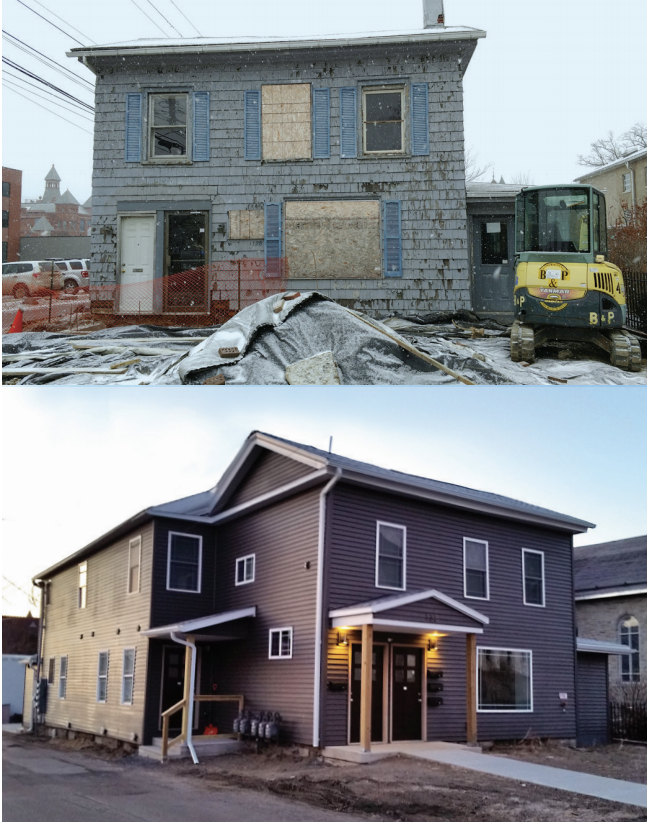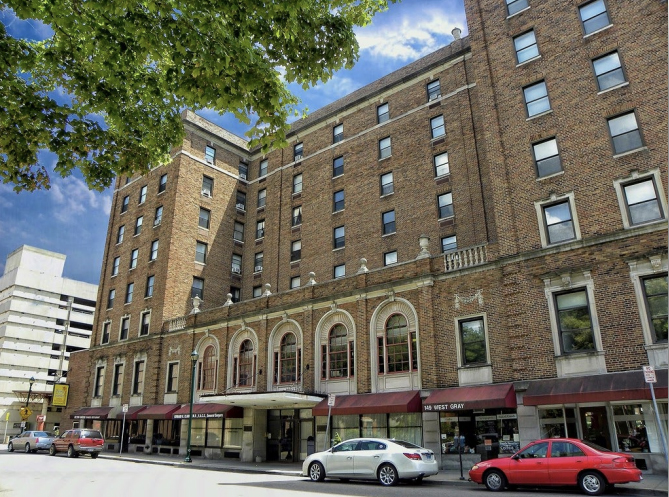Success Stories
Corning Housing Partnership
The Corning Housing Partnership (CHP) is a public/private partnership focused on neighborhood revitalization in the City of Corning, NY.

Established in 2016, the partnership includes the City of Corning, Corning Enterprises, Three Rivers Development Foundation and Arbor Housing and Development. Three Rivers functions as a partner in an administrative support role and as a strong community advocate. The overall goal is to transform neighborhood and increase property values by investing in major property rehabilitation projects. During the period 2016-2020, investment in program expenses and direct investment in housing revitalization totaled $1.8 million, supported by $760,000 in property owner investments, $645,000 contributed by Corning Enterprises, and $74,000 in government grants to property owner participants.
Investments made through the CHP initiative not only result in the enhanced visual appearance of target neighborhoods, but also strengthen property values and overall desirability among new buyers and tenants. Since inception of the program single-family property values in the three target neighborhoods have increased 9 % to 11 %, and the multi-family property values have increased between 93% and 131% in these same areas.
Investments in Housing
During the past 10 years Three Rivers has undertaken numerous studies to gain an in-depth understanding of supply and demand for both single-family and market rate housing based on driving factors such as employer expansion, talent attraction, shifts in population, downtown revitalization initiatives, and more.



These studies have been used by developers to make decisions about investments in both new construction and conversion of upper stories of historic buildings for development of several hundred market rate rental units in communities such as the City of Corning, City of Elmira and Town of Erwin.
Three Rivers Development Corporation undertook a study to understand and forecast the single-family and market rate housing demand in Steuben County. The analysis confirmed Steuben County’s qualities as a place to live and work, but it also documented the lack of inventory in quality single-family housing units to meet the demand of moderate and middle-income households, first time home buyers and professionals relocating to the county as an economic development barrier. The study recommends four key strategies: A County-wide owner-occupied housing rehabilitation initiative to increase stock while simultaneously stimulating investments in neighborhoods, increasing property values, and reversing potential for depreciation; bundling vacant lots together with demolition to create lots and collaborate with developer for new construction; reversing the trend of conversion to multi-family by capturing and revitalizing single-family houses in the $30,000 – $75,000 price point; and supporting and advocating for construction in approved subdivisions. Housing is a top priority for Three Rivers Development Corporation, and it will continue to actively support Steuben County in its efforts to seek investments and pursue these strategies.
Additionally, Three Rivers Development Corporation undertook a project to analyze and forecast the demand for market rate housing in the City of Elmira’s downtown core. The analysis revealed a forecast for a minimum of 230 units and potentially 300 additional units for the period 2021-2024. With a continued desire for an urban lifestyle this number has the potential to reach a total demand for 500 to 645 units during the period 2021-2027. The demand is being generated by empty nesters, physicians and other health care professionals, medical residents, LECOM students, and new talent relocating to the area including college faculty, executives and senior management level professionals, engineers, scientists, and IT professionals.
Economic Development Strategies for I86 Corridor Interchanges
Interstate 86 is the major east-west corridor extending through Chemung and Steuben Counties, and there are numerous opportunities for community revitalization and private sector investment at exits in the City of Corning, City of Elmira, Town of Erwin, Village of Bath and more.


For example, Three Rivers worked with Southern Tier Economic Growth (STEG) to develop a development prospectus for Opportunity Zone 7 located at the I86 Exit 56 in the City of Elmira.
With the active support of Three Rivers Development, the Town of Erwin developed the I86 Exit 43-Victory Highway Economic Development Strategic Action Plan. The plan identifies the “highest and best use” development opportunities intended to result in removal of pockets of suburban blight, create jobs, grow the size and diversity of consumer groups, complement existing businesses, and contribute to the long-term sustainability of the Town of Erwin through sales tax, property tax and other revenue sources. The plan already has sparked interest by developers in new project development to convert former vacant commercial spaces surrounding this active I86 interchange.
Three Rivers Development Corporation collaborated with HUNT Engineers to develop an economic development strategy for the Village of Bath, also located at a prime I86 exit and entrance to Finger Lakes Wine Country. The Village’s proximity to the I86 corridor, its status as the Steuben County seat and the proximity to the many activities and destinations surrounding Keuka Lake area, means the Village’s economic vitality has wide ranging implications and influence throughout the region. The new economic development strategy is built on four major pillars including strengthening the real property tax base, becoming a destination by leveraging its many assets ranging from quality of life to it location as a major gateway to tourists, attracting public and private investment, and growing its customer base. Three Rivers will continue to collaboration with agencies such as Steuben County IDA to actively support the Village as it proceeds with implementation of its economic development action plan. Three Rivers also prepared an investment prospectus for the Village to use in attracting property developers and small businesses.
I86 Innovation Corridor
Three Rivers Development spearheaded development of an economic development strategy for the I86 Corridor, for the region extending from Elmira in Chemung County to Painted Post in Steuben County.

The Strategic Action Plan for the I‐86 Innovation Corridor was designed to accelerate public/private investment, create job opportunities, advance regional competitiveness, and create the magnetism to draw and keep young, skilled workforce participants. The Plan was designed to exploit, connect, and leverage the region’s strengths and resources, including key physical and innovation assets, which had been identified in a prior set of foundational studies and analyses completed by Three Rivers. The Vision of the plan was for “The I‐86 Innovation Corridor to be recognized as a destination business development location, distinguished by its concentration of multi‐ national anchor companies, advanced infrastructure to support innovation and technology, rich educational and research resources, specialized and skilled workforce and vibrant communities.”
The Plan included four key strategies including Leadership, Human Capital, Built Environment, and Innovation and Business Development. Three Rivers again took the lead in development of a 3-county workforce development strategy as a continuation of the I86 Innovation Corridor plan.
Downtown Revitalization

Three Rivers took the lead in coalescing the City of Corning, community leaders and private investors to revitalize downtown Corning. In fact, the initiative was recognized as the first major revitalization effort in the country that was focused on historic renovation of a downtown main street. Market Street in Corning, and subsequently Corning’s Gaffer District, continues to be recognized on a national level as a model for revitalization of downtown and community cores in communities with under 50,000 population.
Rebuilding After the 1972 Flood

Corning, NY and the surrounding area were devastated by the Flood of 1972. The flood destroyed businesses and severely impacted the Corning Museum of Glass, which was described as the “greatest single catastrophe borne by an American museum.” Three Rivers Development played an integral role in the total rebuilding and revitalization of the business community in Corning’s downtown.



